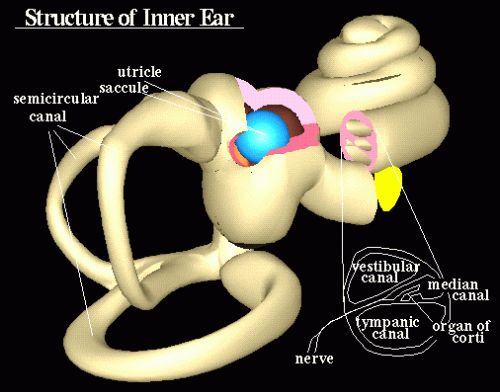Effect of infrasound on cochlear damage from exposure to a 4 kHz octave band of noise
By Chiu Longina • Mar 11th, 2008 • Category: TEXTO
LINK TO ORIGINAL TEXT
Published in http://www.sciencedirect.com/
Effect of infrasound on cochlear damage from exposure to a 4 kHz octave band of noise
Gary W. Harding, Barbara A. Bohnea, Steve C. Leea and Alec N. Salta
Department of Otolaryngology, Washington University School of Medicine, St. Louis, MO 63110, United States
Abstract
Infrasound (i.e., <20 Hz for humans; <100 Hz for chinchillas) is not audible, but exposure to high-levels of infrasound will produce large movements of cochlear fluids. We speculated that high-level infrasound might bias the basilar membrane and perhaps be able to minimize noise-induced hearing loss. Chinchillas were simultaneously exposed to a 30 Hz tone at 100 dB SPL and a 4 kHz OBN at either 108 dB SPL for 1.75 h or 86 dB SPL for 24 h. For each animal, the tympanic membrane (TM) in one ear was perforated (not, vert, similar1 mm2) prior to exposure to attenuate infrasound transmission to that cochlea by about 50 dB SPL. Controls included animals that were exposed to the infrasound only or the 4 kHz OBN only. ABR threshold shifts (TSs) and DPOAE level shifts (LSs) were determined pre- and post-TM-perforation and immediately post-exposure, just before cochlear fixation. The cochleae were dehydrated, embedded in plastic, and dissected into flat preparations of the organ of Corti (OC). Each dissected segment was evaluated for losses of inner hair cells (IHCs) and outer hair cells (OHCs). For each chinchilla, the magnitude and pattern of functional and hair cell losses were compared between their right and left cochleae. The TM perforation produced no ABR TS across frequency but did produce a 10–21 dB DPOAE LS from 0.6 to 2 kHz. The infrasound exposure alone resulted in a 10–20 dB ABR TS at and below 2 kHz, no DPOAE LS and no IHC or OHC losses. Exposure to the 4 kHz OBN alone at 108 dB produced a 10–50 dB ABR TS for 0.5–12 kHz, a 10–60 dB DPOAE LS for 0.6–16 kHz and severe OHC loss in the middle of the first turn. When infrasound was present during exposure to the 4 kHz OBN at 108 dB, the functional losses and OHC losses extended much further toward the apical and basal tips of the OC than in cochleae exposed to the 4 kHz OBN alone. Exposure to only the 4 kHz OBN at 86 dB produces a 10–40 dB ABR TS for 3–12 kHz and 10–30 dB DPOAE LS for 3–8 kHz but little or no OHC loss in the middle of the first turn. No differences were found in the functional and hair-cell losses from exposure to the 4 kHz OBN at 86 dB in the presence or absence of infrasound. We hypothesize that exposure to infrasound and an intense 4 kHz OBN increases cochlear damage because the large fluid movements from infrasound cause more intermixing of cochlear fluids through the damaged reticular lamina. Simultaneous infrasound and a moderate 4 kHz OBN did not increase cochlear damage because the reticular lamina rarely breaks down during this moderate level exposure.
Keywords:
Infrasound; Noise; Histopathology; ABR; DPOAE; Chinchilla
Abbreviations:
ABR, auditory brainstem response; DPOAE, distortion product otoacoustic emission; IHC(s), inner hair cell(s); LS(s), level shift(s); NIHL, noise-induced hearing loss; OBN, octave band of noise; OC, organ of Corti; OHC(s), outer hair cell(s); PTS(s), permanent threshold shift(s); SPL, sound pressure level; TM, tympanic membrane; TS(s), threshold shift(s); TTS(s), temporary threshold shift(s)

Chiu Longina is
Email this author | All posts by Chiu Longina




